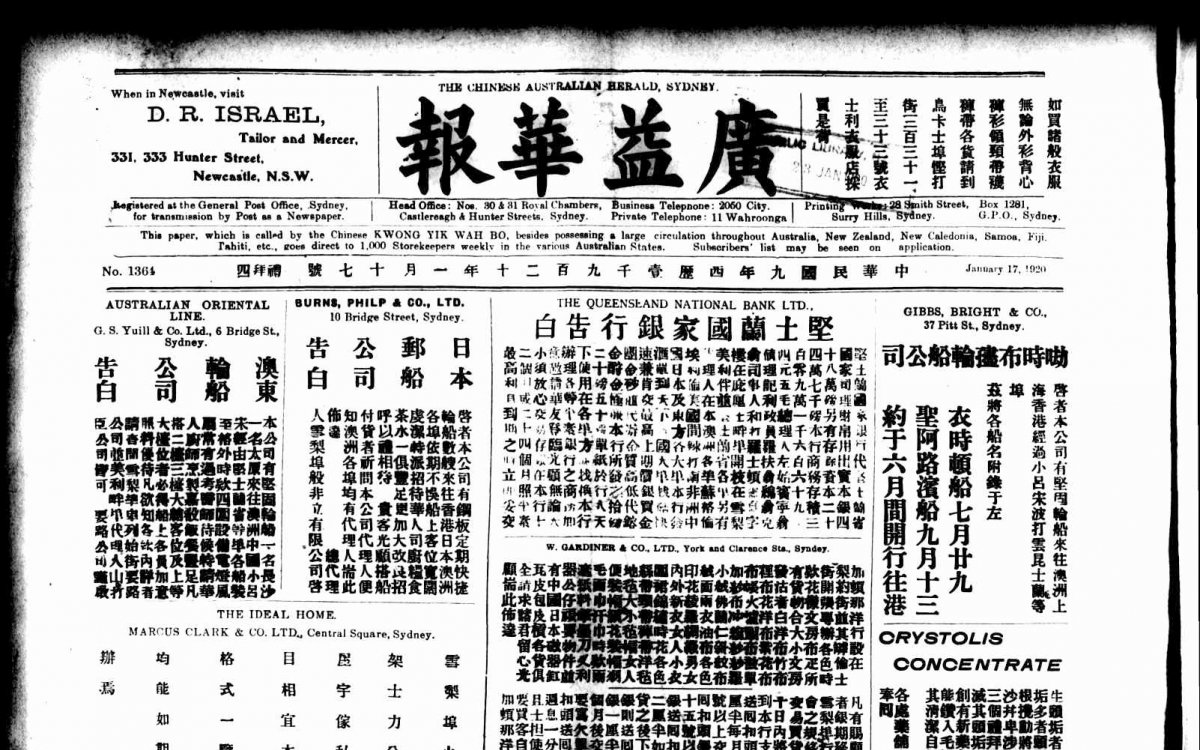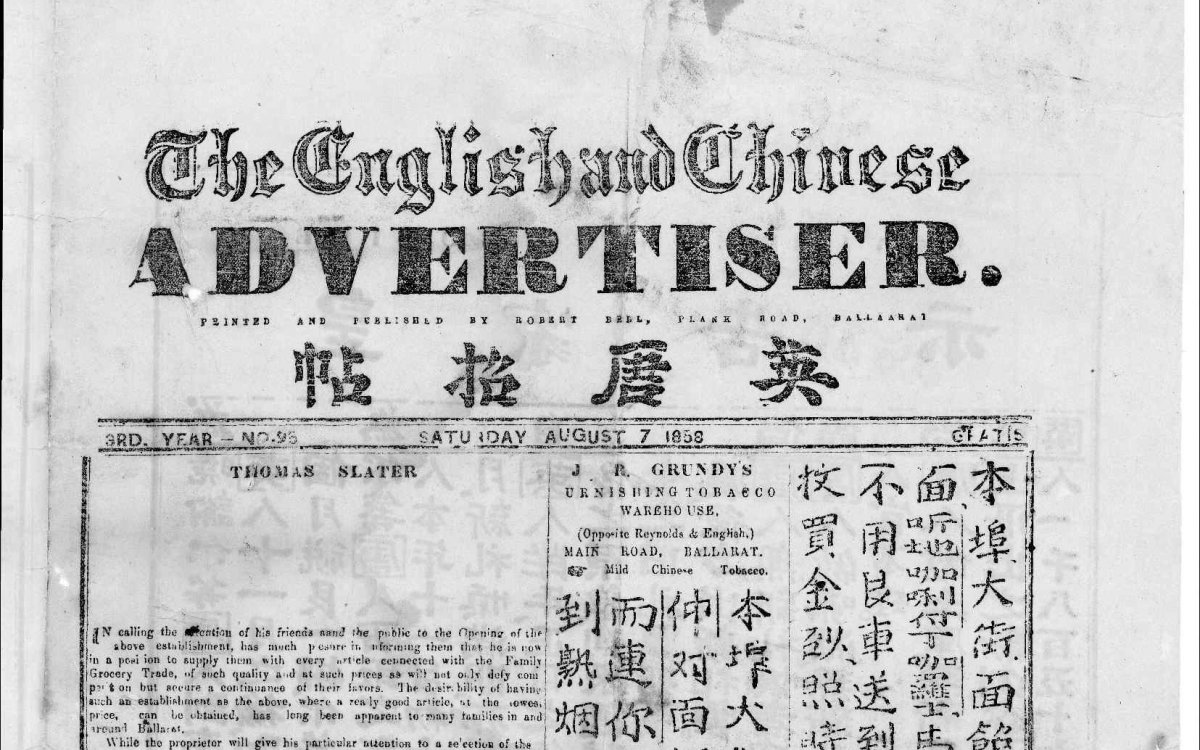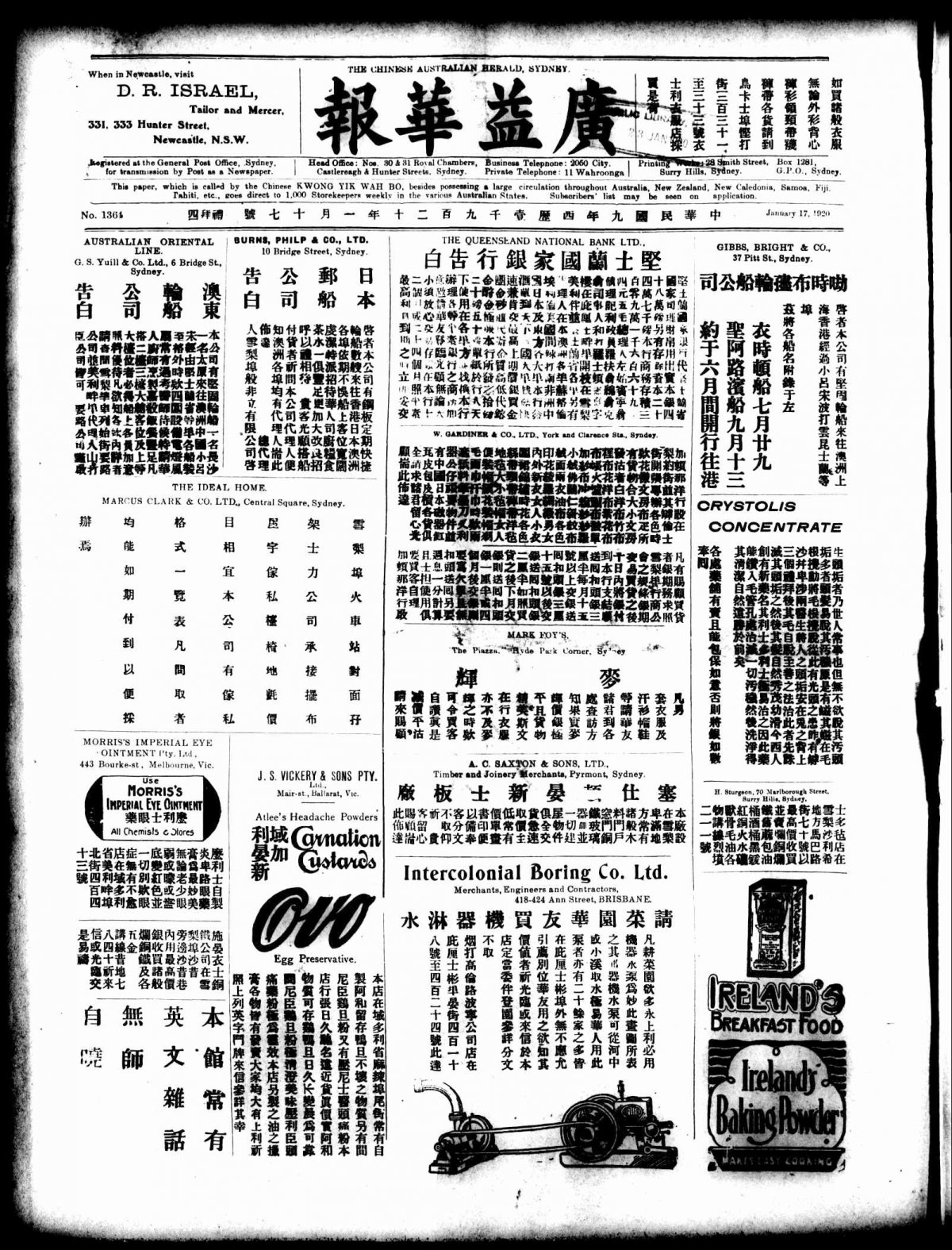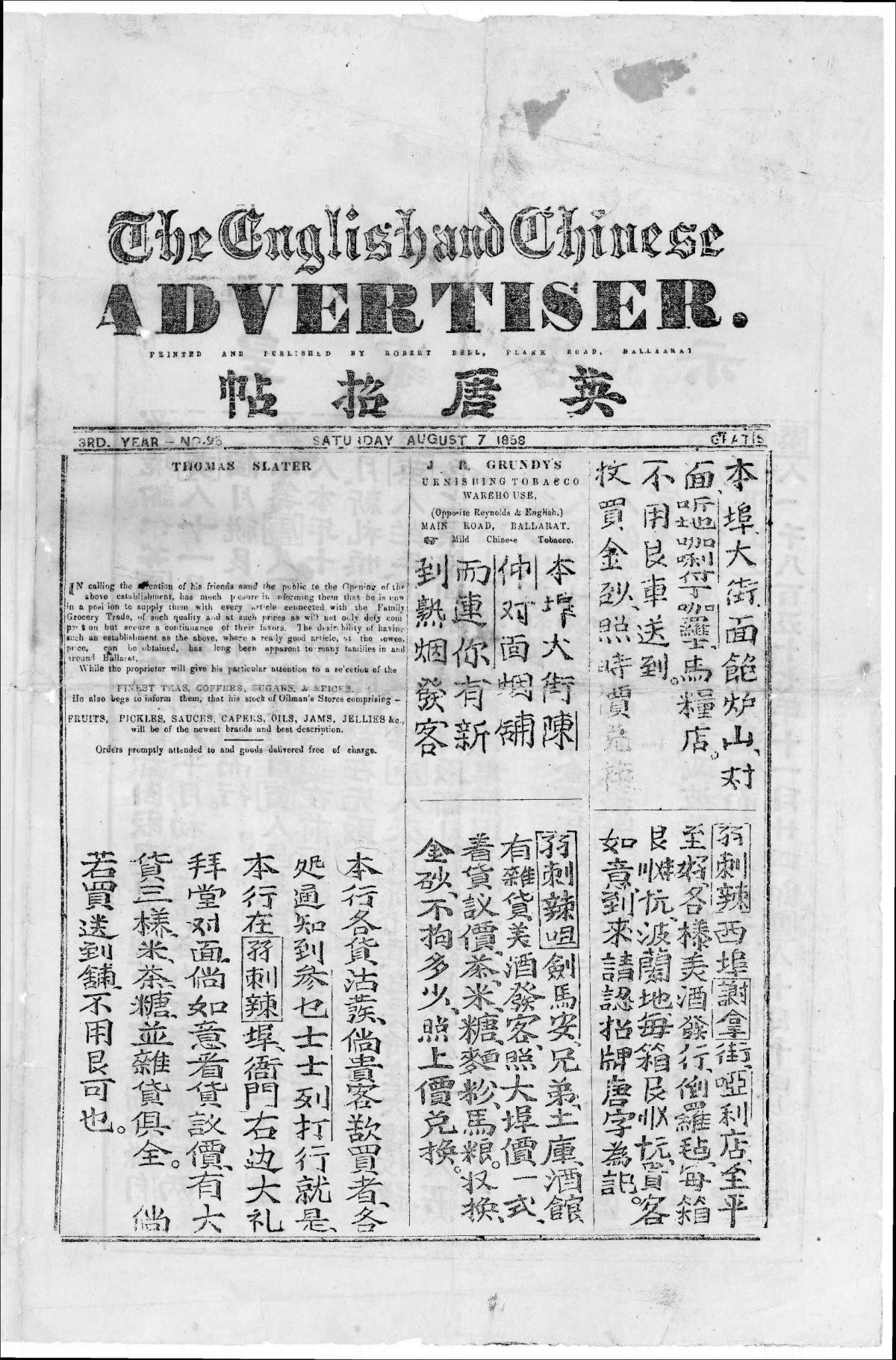
(2015). Guang yi hua bao = The Chinese Australian Herald. https://nla.gov.au/nla.news-title704

(1858, August 7). The English and Chinese Advertiser (Vic.: 1856–1858), p. 1. Retrieved May 26, 2022, from http://nla.gov.au/nla.news-page15910530
Chinese Settlement in Australia
Stringent colonial restriction laws affected early Chinese migration to Australia. Chinese miners followed the gold rush to the goldfields in large numbers, arousing racial tensions among the Australian miners. While many went back to China after the gold rush, some remained and at this time market gardening became a favoured occupation. Severe immigration laws (the Immigration Restriction Act 1901) impacted on Chinese settlement, and it wasn’t until post-World War II that numbers increased, with repatriation of wartime refugees followed by sponsored workers and, into the 1960s, non-sponsored students. This meant Chinese immigration into suburban areas with a sponsorship system was not conducive to settling family groups. The 1960s and 1970s saw Chinese restaurants and food outlets become popular in suburban and regional Australia. From this period, integration into Australian society occurred in residence, marriage and in occupations, as well as socially.
Anti-Chinese legislation in early colonial Australia
In June 1855, the recently formed colony of Victoria passed its first anti-Chinese legislation: An Act to Make Provisions for Certain Immigrants. The Victorian Act of 1855 was the first of its kind in the Australian colonies. It imposed a poll tax of ten pounds upon every Chinese arrival and limited the number of Chinese people on board each vessel to one person for every ten tonnes of goods. To avoid the legislation, shipping companies landed Chinese gold seekers in Guichen Bay in South Australia and many Chinese arrivals were disembarked at the township of Robe.
Anti-Chinese legislation in early colonial Australia
In June 1855, the recently formed colony of Victoria passed its first anti-Chinese legislation: An Act to Make Provisions for Certain Immigrants. The Victorian Act of 1855 was the first of its kind in the Australian colonies. It imposed a poll tax of ten pounds upon every Chinese arrival and limited the number of Chinese people on board each vessel to one person for every ten tonnes of goods. To avoid the legislation, shipping companies landed Chinese gold seekers in Guichen Bay in South Australia and many Chinese arrivals were disembarked at the township of Robe.
Australia’s Chinese communities actively published their own Chinese language newspapers. The 1890s to the 1940s saw the rise of Chinese newspapers, although there had been some production during the 1850s and 1860s. The Chinese language newspapers provide a chronological cultural snapshot through news articles, editorials, advertisements and shipping timetables, showing how the Chinese population saw themselves in the Australian landscape. The language used in the newspapers reflects the predominantly Cantonese origins of the Chinese migrant populace.
Activities:
- Have students write an article about a mystery (real or imagined). Use this exercise to make students consider writing style and tone. Students will need to demonstrate a range of writing and grammatical styles and consider the tone of the article, the audience and the purpose of the article.
- Discuss the ways different language newspapers might be affected by the delivery of information from the land of origin.
- Explore the articles and content of the newspaper resources linked above.

